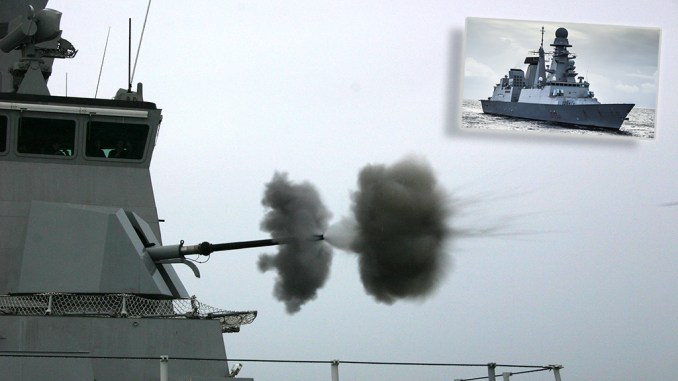
The Anti-Air Warfare Destroyer of the Marina Militare engaged and shot down two more aerial drones in the Red Sea.
Few days after shooting down the first drone in support of the the European Union operation Aspides, ITS Caio Duilio, an Anti-Air Warfare destroyer of the Italian Navy (Marina Militare), shot down two more drones in the Red Sea.
Congratulazioni all’equipaggio del cacciatorpediniere #CaioDuilio che ha abbattuto due droni nel Mar Rosso nell’ambito della missione Ue Aspides. @ItalianNavy garantisce la libera navigazione e protegge i nostri mercantili.Fieri dei nostri marinai!
— Antonio Tajani (@Antonio_Tajani) March 12, 2024
According to EUNAVFOR, on Mar. 12, 2024 at between 02.00AM and 05.45AM Djibouti time, the Italian destroyed repelled the attack from UAVs coming from Houthis-controlled territories in Yemen and posing a direct and imminent threat to the freedom of navigation.
On 12 March 2024 (02:00a.m. – 05:45a.m. Djibouti time), ASPIDES warship IT Destroyer CAIO DUILIO repelled an attack from UAVs coming from Houthis controlled-territories in Yemen and posing a direct and imminent threat to the freedom of navigation.
@operation_aspides— EUNAVFOR ASPIDES (@EUNAVFORASPIDES) March 12, 2024
At this time it’s not clear whether the drones were aiming at the Italian warship or another vessel in the region. On Mar. 2, the Italian destroyer shot down an UAV for self-defense, at a distance of 6 kilometers, using its starboard bow OTO 76mm cannon, which fired six shots.
Although it’s not been confirmed yet, it is quite likely that 76mm cannons were again used to shoot down the drones: these Super-Rapid guns are extremely effective and much cheaper than low and medum-range Aster missiles, therefore the weapon of choice against relatively low-cost targets.
Generally speaking, it won’t be easy for the Houthi rebels to hit Caio Duilio, a multirole warship with significant AAW capabilities. As explained in a previous post, Caio Duilio is equipped with autonomous Command and Control capabilities, LRR S-1850 M long range radar, and PAAMS (Principal Anti Air Missile System) with an EMPAR multi-function radar 6 DCNS Vertical Launch System Sylver A50 modules with 48 cells for MBDA short range Aster 15 or medium range Aster 30 missiles; three Oto Melara 76/62 mm Davide/Strales Super-Rapid guns (ILDS, updated to Strales version since 2017) and two Oto Melara 25/80 with Oerlikon KBA 25mm guns.
Houthi attacks on maritime traffic in the Bab el-Mandeb Strait have been quite effective as they endanger a critical gateway for trade and the global economy, affecting the trade flows and global supply chanes. In the first half of 2023, trade going through the Suez Canal represented about 12% of global trade, including 30% of container traffic, 10% to 15% of global seaborne cargo and 8% of global liquefied-natural-gas shipments, according to the IMF’s regional economic outlook update for the Middle East and Central Asia At the end of January 2024, the 10-day cumulative shipping volume through the Suez Canal had dropped close to 50% relative to 2023.
- SEO Powered Content & PR Distribution. Get Amplified Today.
- PlatoData.Network Vertical Generative Ai. Empower Yourself. Access Here.
- PlatoAiStream. Web3 Intelligence. Knowledge Amplified. Access Here.
- PlatoESG. Carbon, CleanTech, Energy, Environment, Solar, Waste Management. Access Here.
- PlatoHealth. Biotech and Clinical Trials Intelligence. Access Here.
- Source: https://theaviationist.com/2024/03/12/italian-navy-destroyer-caio-duilio-shoots-down-two-more-drones-in-red-sea/?utm_source=rss&utm_medium=rss&utm_campaign=italian-navy-destroyer-caio-duilio-shoots-down-two-more-drones-in-red-sea




